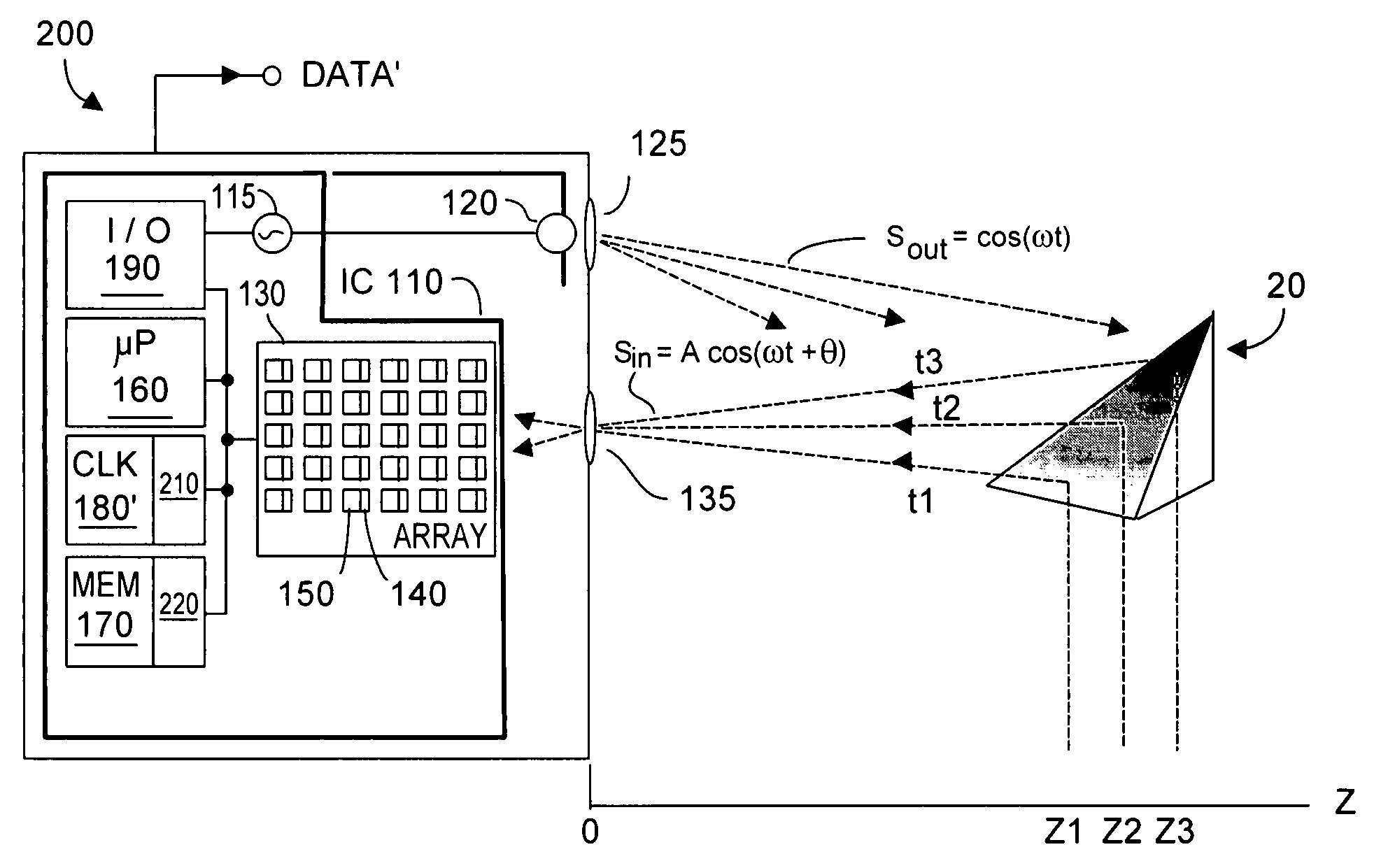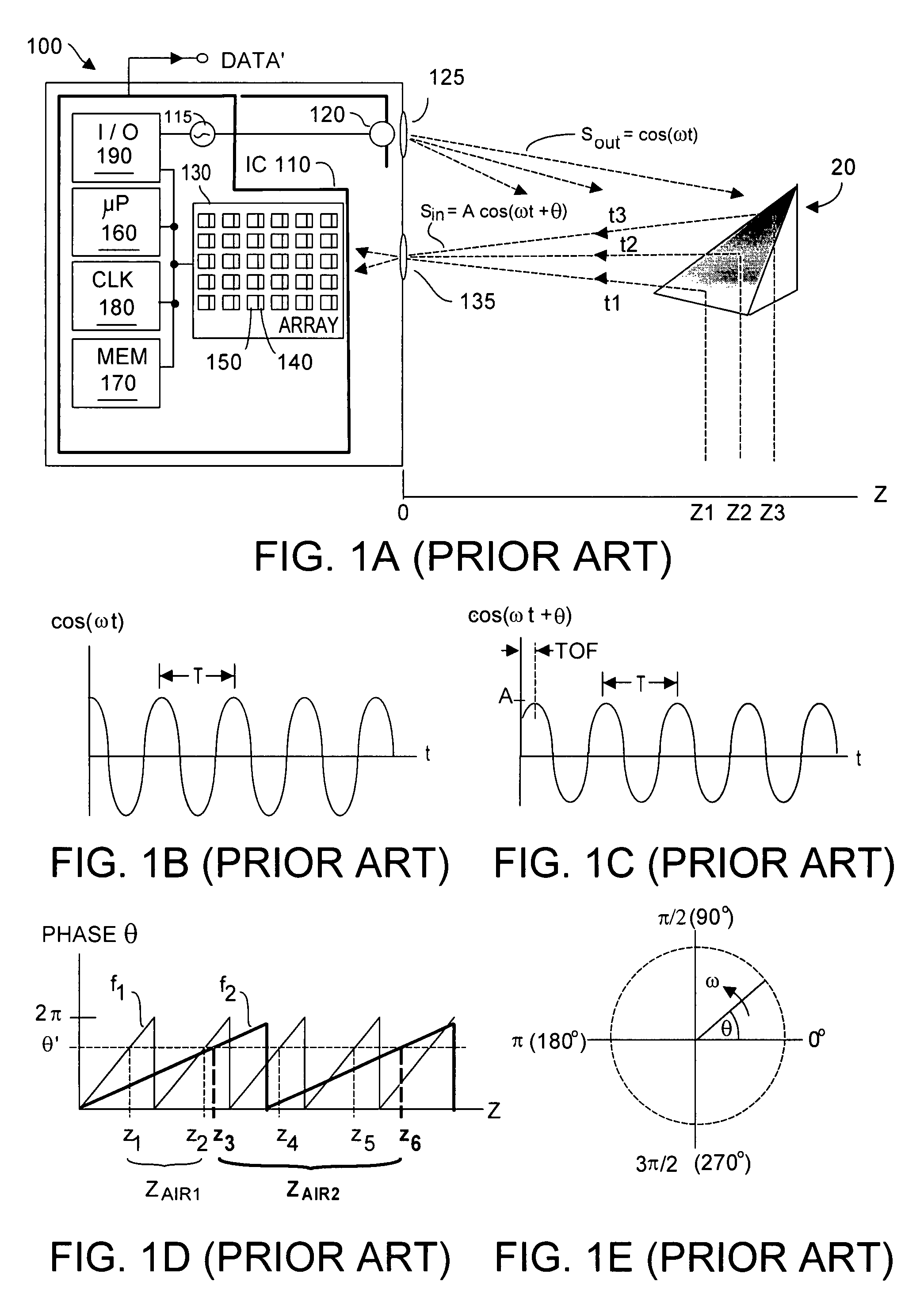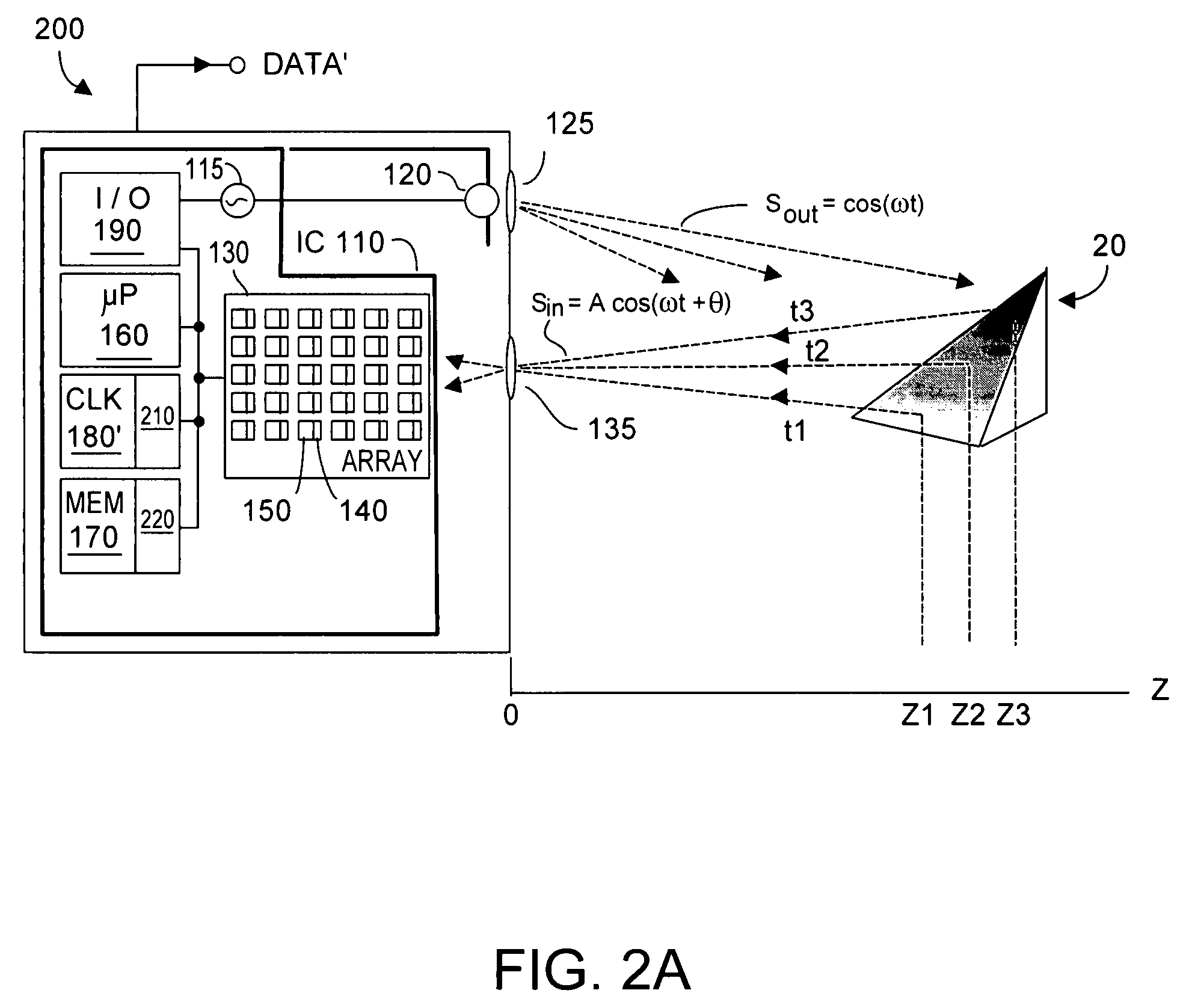Method and system for lossless dealiasing in time-of-flight (TOF) systems
a time-of-flight and lossless technology, applied in the field of depth imaging systems, can solve the problems of wasteful modulation frequency decrease approach to dealiasing, low resolution (greater uncertainty) in accurately determining z, and inability to reduce modulation frequency f, so as to facilitate rapid learning an approximate value for z, the effect of effective aliasing interval range of zdair
- Summary
- Abstract
- Description
- Claims
- Application Information
AI Technical Summary
Benefits of technology
Problems solved by technology
Method used
Image
Examples
Embodiment Construction
[0036]FIG. 2A depicts a phase-type TOF system 200 similar to that described with respect to FIGS. 1A-1C, except that additional components 210 and software 220 are included to implement the present invention. As such, software 220 and 210 may be considered as a dealiasing subsystem for TOF system 200. Output DATA' may include information provided as DATA by TOF system 100 in FIG. 1A. A TOF system such as system 100 (FIG. 1A) or 200 (FIG. 2A) normally is operable at some maximum modulation frequency fm, perhaps 100 MHz. This is not to say that the system cannot be operated at a modulation frequency greater than fm, but it is realized that at such higher modulation frequencies, system performance ultimately degrades. Thus, it is understood that fm denotes the highest modulation frequency at which the system is normally operable, and not the highest modulation frequency at which it can be operated.
[0037]Before describing dealiasing operation of system 200, it is useful to briefly descr...
PUM
 Login to View More
Login to View More Abstract
Description
Claims
Application Information
 Login to View More
Login to View More - R&D
- Intellectual Property
- Life Sciences
- Materials
- Tech Scout
- Unparalleled Data Quality
- Higher Quality Content
- 60% Fewer Hallucinations
Browse by: Latest US Patents, China's latest patents, Technical Efficacy Thesaurus, Application Domain, Technology Topic, Popular Technical Reports.
© 2025 PatSnap. All rights reserved.Legal|Privacy policy|Modern Slavery Act Transparency Statement|Sitemap|About US| Contact US: help@patsnap.com



